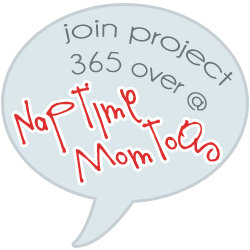Okay, so I made up that last one to suit me and it may be real and then again it might not so I'll tell you about it in a minute.
Today I went over to a friend's house to get CPR certified through the American Heart Association. It was a 4 hour course and we practiced on "manikins" as they were called (both adult and babies) and learned how to really be a hands on person in the face of an emergency. The friend's mom is the trainer/educator for the Austin Airport so we got a really nice personalized training session.
I noticed a few changes in the protocol since I last took the course. It's been over 10 years since I have done any certification and it was interesting to see what had changed. The basics are the same:
1. Make sure that it's a safe environment for yourself as well as the victim.
2. Try to get a response from the victim to see if they are okay. (ARE YOU OKAY? is the standard question.)
3. Call for help. If someone is nearby and responds ask them to be the one to call 911. If you are in an area where there are AEDs, have them retrieve it for you after they call 911.
3a. If no one responds, call 911 and report your location, give a brief description of the victim and then tell them that you know CPR and that you are going to begin.
ONCE YOU BEGIN CPR, IT IS IMPORTANT NOT TO STOP UNTIL EMS ARRIVES. THIS IS WHY YOU CALL FIRST, UNLESS IT IS A CHILD.
4. Listen for breathing. If you do not notice breathing within 5 to 10 seconds, tilt head back to secure an airway and give 2 breaths. (You only breathe as hard as you would normally breathe yourself. You do not suck in large amounts of air.) You will notice the chest rise and fall with each of your breaths.
5. As soon as 2 breaths are in, start compressions. 30 compressions (this was the main difference I noticed. it used to be only 15 compressions, but they have found that doing 30 actually gives a better survival statistic.)
6. Repeat breaths and compressions until emergency medical persons can relieve you. If it is a child, give breaths immediately and start compressions. Do this cycle 5 times before calling 911. Children need air more quickly than adults do in this situation. With children you always complete 5 cycles before switching off care.
**If an AED (Automated External Defibrillator) is available, you connect it to an adult as soon as you get 2 breaths into him/her. Then you follow the prompts on the AED. It tells you exactly what to do. You turn it on. Attach the pads to dry, hairless skin on the upper right chest and the left side 1 inch under the armpit. The AED will run an EKG and will let you know if you need to shock the patient. It will warn you to clear the patient and then will tell you when to push the button to administer the shock. You will then be prompted to begin your cycle of 30 compressions followed by 2 breaths. The AED will stay on and will continue to monitor the patient and may have you stop and shock again. Of note, these AEDs have microchips that record everything that is happening. They can hear you talking, they can hear you giving breaths, etc. DO NOT UNHOOK THE PATIENT FROM THE AED or REMOVE the PADS. Do NOT turn the AED machine off. With a child, you may need to place one pad on the front and one pad on the back due to the child's size. You would only do this after completed 5 cycles of CPR. Then you would follow the prompts of the AED.
It was a great class and I really feel like I am back to par on being able to help in an emergency. It's always nice to brush up on old skills and to see if there have been changes (like there had been for me.) It also was nice to get some hands on experience with the AED. I had never worked with one and would have not known what to do with one until now. I highly recommend all of you to go out and find this course if you get a chance. It just might save a life!
Oh and as far as OOMM. It stands for Out Of My Mind with regards to trying to referee my children. They are driving me crazy with the bickering and fighting.
Busy, busy, busy, busy, busy!
13 years ago












Good for you for getting some refreshing! My sister and I took a course like this when the girls were little and I'm glad we did, especially since the course also covered choking and other kid related issues. I still don't know if I have what it takes in a medical emergency and tend to think I don't, but I've surprised myself in the past (re: choking). So much better to have learned the skills than to be in a position where you need then and COULD use them but don't know what to do.
ReplyDeleteOOMM. If only we could get certification for that, instead of just made certifiably crazy!